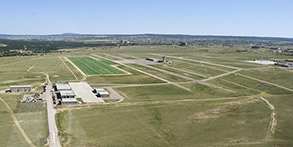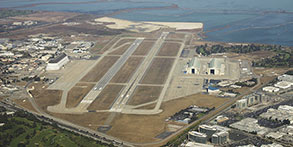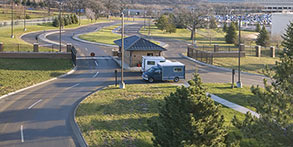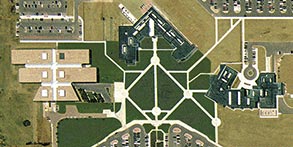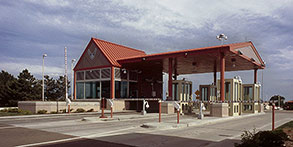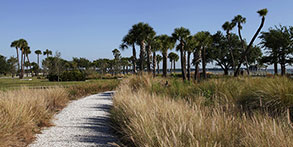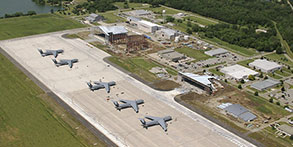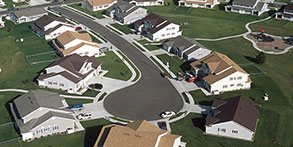- Bases are required to provide and maintain Installation Facilities Standards (IFS) as a Component Plan of the base’s Installation Development Plan (IDP).
- Include under this topic in the IFS a brief history of the base and its unique climatic conditions, which affect the design of installation elements, sites, facilities exteriors and facilities interiors.
- Provide in the IFS a brief overview of the base’s vision for future development.
Comply with UFC 2-100-01 for Master Planning Strategies. Follow AFI 32-1015 for Air Force Integrated Installation Planning, the Installation Development Plan and the Comprehensive Planning Platform.
Installation Planning Standards (IPS), which are identified in the above referenced UFC, include Street Envelope Standards and Landscape Standards. These topics will be contained in the base’s Installation Facilities Standards (IFS) document and applied under the IFS program.
Sustainability
Apply Sustainability Development Indicators (SDI) in the comprehensive planning process and consider SDI values and information when developing and updating the base’s Installation Development Plan (IDP).
Consider facility utilization and building reuse as a sustainability issue and do not heat, cool, or unnecessarily maintain unused or excess facilities.
Resilience
Follow Unified Facilities Criteria (UFC) 2-100-01, Installation Master Planning, and other Department of Defense (DoD) and Air Force (AF) guidance and address severe weather and climate risks in the Installation Development Plan (IDP). Provide strategies in the IFS to mitigate risks. Refer to AF guidelines for screening and assessing risks and for taking actions to mitigate risks for AF assets.
Verify the operational functionality and locate mission critical facilities outside areas of risk whenever possible. When new construction within areas of risk is dictated by mission requirements, such as for radar/communication sites, integrate mitigation strategies following DoD, AFCFS and IFS guidance. Align the implementation of adaptation strategies with the anticipated life expectancy and acceptable quality of the facility.
Evaluate weather-related, climate-related and geological risks to critical infrastructure and define installation-level standards for risk mitigation in the applicable section of the IFS. For example, provide standards for flood mitigation in the Stormwater Management section. Prioritize the use of passive and renewable systems in risk mitigation standards whenever life-cycle cost effective.
Areas at high risk to tornadoes will respond with hardening of facilities and engineered storm shelters for occupants.
Analyze site and subsurface conditions prior to the design of facilities and address applicable geological events, including erosion and subsidence, in the IFS; generally, provide mitigation strategies following UFC 1-200-01 General Building Requirements and its references to building codes. Analyze and note hydrological conditions, such as precipitation, permeability of soils, water table, wet/dry seasons, elevational fluctuations, etc., in the IFS.
For sites subject to storm surge flooding or tsunami, risk mitigation strategies will consider building outside the area of risk as the first option. Utilize UFC 3-201-01 Chapter 2 for reference on site design, flooding, floodplain, and flood mitigation. Refer to AFI 32-1015 Chapter 6 Installation Development Planning for guidelines to follow in accordance with 10 USC 2864. See AFMAN 32-7003 section 3.22 and AFI 32-1020 for guidance on floodplain mapping. Elevating facilities above the storm surge flood elevation may be considered as the second option. Consider tidal influences in conjunction with wave height.
For sites subject to non-storm surge flooding such as extreme snowfall and rainfall events, mitigation strategies will consider building outside flood plains as the first option. Facilities that must be constructed in a flood plain will be designed and constructed in accordance with American Society of Civil Engineers (ASCE) 24-14 Flood Resistant Design and Construction. Elevating sites and facilities above the flood plain elevation may be considered as an alternative.
Monitor drought, desertification and ecosystem shifts and update the IFS regularly to modify landscape plant lists, facilities exterior materials, and dust mitigation strategies for exterior and interior systems.
Coordinate risk mitigation strategies with installation and local fire services for wildfire in forests and urban settings. Consider "fire-wise" practices of the local fire services as the first priority. Reinforce the mission and objectives of the Air Force Wildland Fire Branch.
Identify areas of potential shift from heating energy to cooling energy and consider facility siting and orientation to promote the use of passive systems such as solar shading, location of windows and increased insulation.
Provide energy resilience solutions applicable to the level of critical mission capability. Incorporate energy resilience standards for new infrastructure, sites and facilities in the IFS. Include cost-beneficial strategies, and regulating systems with sensing, actuation and control that are predictive and adaptive.
Evaluate upgrading, standardizing or replacing current installation energy generation infrastructure, facilities, systems, and equipment. Consider redundant power supplies, such as energy storage and generators, and introduction of renewable energy technologies such as solar, wind and microgrid. Follow current AF guidance for developing and using performance contracts.
Manage water resources as part of the Installation Energy portfolio. Use a risk-based approach to manage water resources to directly support mission assurance. Recognize vulnerabilities and coordinate with the installation water resources management program. Support installation water resilience planning with design and materials performance standards for infrastructure, sites and facilities; installations are required to publish these quality standards in the IFS.
UFC 1-200-02 High Performance and Sustainable Building Requirements https://www.wbdg.org/ffc/dod/unified-facilities-criteria-ufc/ufc-1-200-02
UFC 2-100-01 Installation Master Planning https://www.wbdg.org/ffc/dod/unified-facilities-criteria-ufc/ufc-2-100-01
AFI 32-1015 Integrated Installation Planning https://static.e-publishing.af.mil/production/1/af_a4/publication/afi32-1015/afi32-1015.pdf
